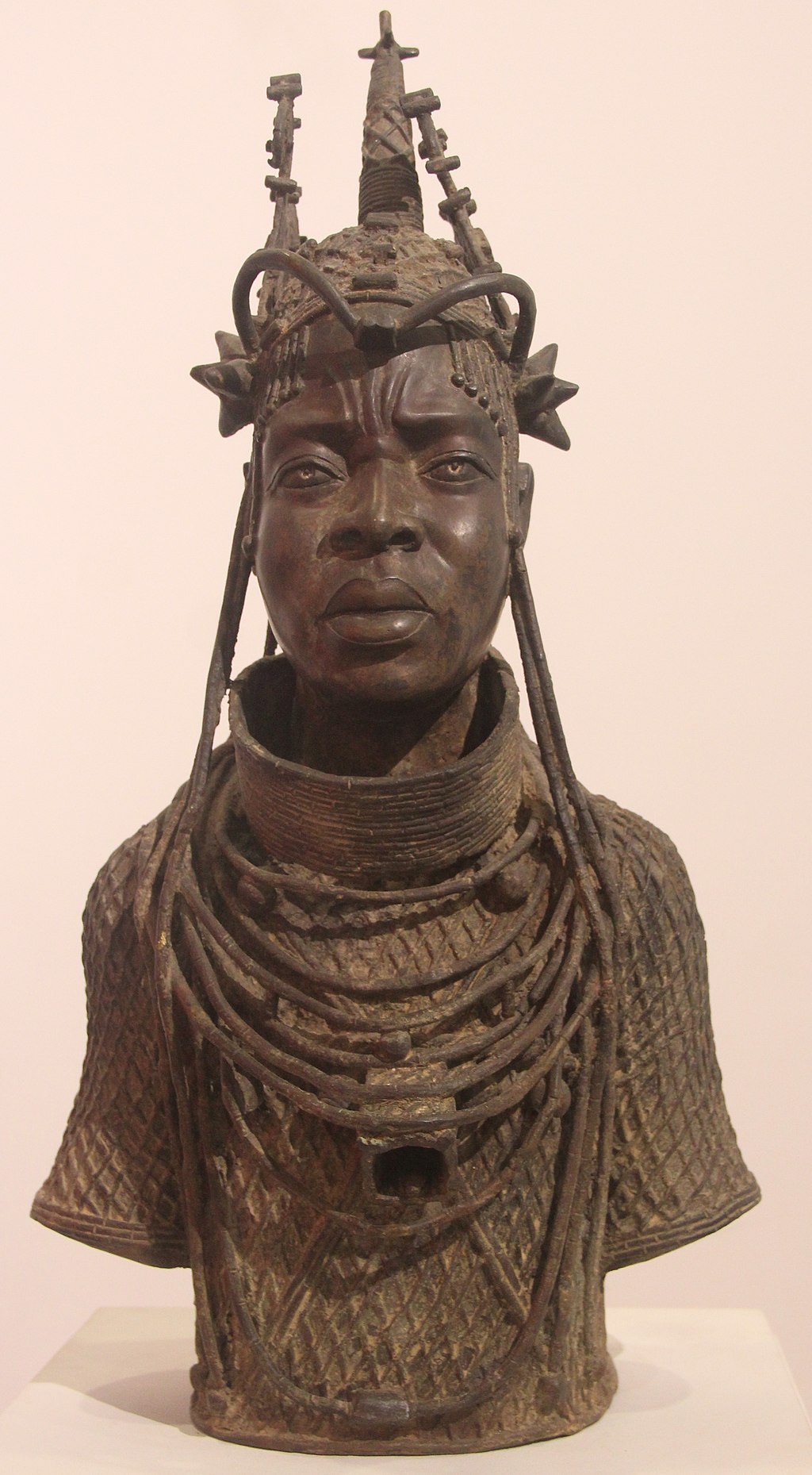In the following article, Collins Edigin, a historian at the University of Benin in Benin City, Nigeria, describes the rule of the Obas of Benin, a continuous dynasty of the West African state of Benin (now in present-day Nigeria) that began in the 13th Century and is one of the oldest in the world.
The kingdom of Benin was one of the most important states of the forest region of West Africa. It was renowned for its well-established system of government its and artistic sophistication. During the reign of the Obas (the second ruling dynasty), the kingdom grew from a small community of a few villages into a powerful empire that carried out extensive trade with the Portuguese and the British.
However, the historical process that gave rise to the emergence of the second dynasty has remained a subject of debate among historians. The main point of disagreement has revolved around the source of authority of the dynasty. One group of writers ascribes Ile-Ife origin (another power kingdom located to the north of Benin) to the emergence of the dynasty. This group is mainly comprised of Yoruba historians who contend that the rule of the Obas in Benin emerged as an offshoot of the royal house of Ife. Another group of writers (Benin historians) countered that the Benin dynasty emerged through a process of internal historical evolution. This group attempts to draw an unbroken link between the rulers of the first dynasty (the Ogisos) and the second. While it may be difficult to ascertain the true historical process that gave rise to the emergence of the second dynasty. One fact is that the title of the rulers of Benin changed from Ogiso to Oba during the second dynasty.
The first three Oba (kings) of Benin were faced with competing claims for power, which limited their authority in the polity. The power of these rulers was restrained by the Uzama chiefs (kingmakers), who treated them on the basis of near equality (primus inter pares). This group of hereditary chiefs possessed some of the attributes of kingship, which enabled them to assume the position of territorial lords over the villages they resided and exact taxes (tributes) from their subjects without recourse to the Oba, This group of rulers also faced considerable resistance from a rival dynasty (the Ogiamien faction) who exercised de facto authority over Benin City, the capital of the kingdom, and held tenaciously to the royal stool of the Ogiso (the emblem of traditional authority). This development meant that the different contenders for power received tribute from their subjects, thereby limiting the capacity of any of them to establish effective control over most Benin people. It would ultimately require military action as well as financial inducement from Ewedo, the fourth ruler of the dynasty, to overcome the forces of Ogiamien at the battle of Ekiokpagha in c1255 AD.
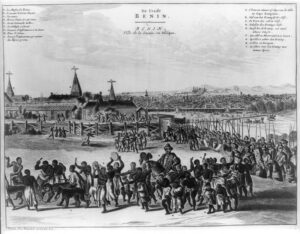
With this victory, Oba Ewedo brought Benin City under his sole authority. He further strengthened his position by instituting several reforms, which made him the dominant power in the Benin region. First, he incapacitated the Uzama chiefs and subordinated them to his authority as mere chiefs who presided over the crowning ceremony of the king. Second, he took possession of the royal stool and erected his royal palace on the territory that had hitherto been the public cemetery in the Ogiso period. This gave him and his successors control over the ancestral cult and shrine of the Ogiso. Furthermore, he created an association of palace officials, including Iwebo, Iweguae, and Ibiwe, which were dedicated to the service of the Oba. The senior association (Iwebo) was generally responsible for the maintenance of the Oba’s wardrobe and regalia. Within the course of time, this association progressively acquired oversight responsibilities over finance and trade. The second association, Iweguae, functioned as the Obas’ domestic servants and personal assistants. They also acted as palace spies for the king, warning him of any impending danger. The third and final palace association was the Ibiwe Society. It catered to the Obas’ wives and children in the harem.
All these reforms strengthened the political and religious authority of the Oba and improved his capacity to extract (labour) tribute from his subjects. Under Ewedo, the prestige associated with the Benin monarchy was restored. This encouraged the influx of migrants into Benin City and the submission of neighbouring communities to the authority of the Oba. This trend was sustained by the successors of Oba Ewedo, such as Oguola and Ewuare who mobilized their subjects in the task of constructing huge ramparts and trenches. Calculations have suggested that it could have taken about 5,000 men working continuously for ten hours in one dry season to have completed the innermost wall. The fact that the earthwork of Benin City constitutes the largest man-made structure in the world, reflects not only the organizational capacity of the rulers but the level of submission of the people to the authority of these kings.
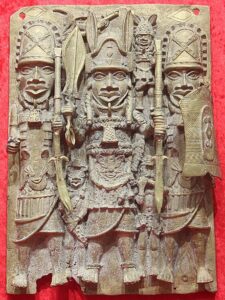
Indeed, the religious authority of the Benin monarchy was reinforced by later powerful kings of the fifteenth and sixteenth centuries, such as Oba Ewuare, Ozolua, and Esigie. During this period, the annual cycle of royal ceremonies was introduced. The most important of these ceremonies were Ugie Erha Oba, in which the royal ancestors were honored, and Igue, which strengthened the mystical powers of the Oba. The elegant and elaborate ceremonial costumes worn by the king and chiefs of Benin (especially the coral bead regalia) were also introduced during the period. This symbolic dressing gave a god-like appearance to the Oba.
During the reign of these kings, Benin was transformed from a relatively small kingdom into a vast empire incorporating many Edo and non-Edo groups. Under Oba Ewuare the Great, who renamed the kingdom, Edo, the state had a population of roughly 100,000 people, including 20,000 warriors. Ewuare and his successors, Ozolua, who saw the arrival of the Portuguese in 1485, and Esigie, conquered neighboring Ekiti and Owo Yoruba groups, some of the Igbo groups west of the Niger, Idah in the Middle belt and majority of the Edo communities. The main thrust of these wars was not only political but economic. The need to extend their influence beyond the Benin region, as well as the desire for wealth through taxes, tribute, and control of trade routes, largely informed the expansionist agenda of these rulers. The success of these objectives can be attributed to the judicious utilization of mystical and military strength. The most notable war of subjugation fought during this period was the conflict between Oba Esigie and his brother, Arhuaran of Udo. This crisis appears to have been inevitable, given the long-term Benin-Udo rivalry and the dynastic feud between the two rulers.
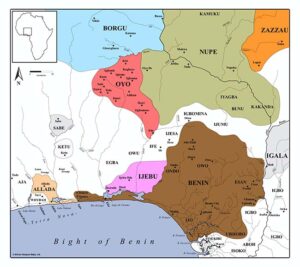
According to Oral tradition, Arhuaran was born just before his brother, Esigie, but did not cry immediately after his birth. Because this was the way births were announced, Esigie was declared the firstborn and official heir to Ozolua. To avert a succession crisis, Ozolua sent Arhuaran to Udo and installed him as the Onogie (duke). However, after the death of their father (Ozolua), Arhuaran of Udo resisted the authority of Oba Esigie, which led to a war between the two brothers. Arhuaran was eventually defeated, and Udo became a subordinate part of the Benin kingdom. After a few months, the Iyase of Udo declared a new war against Benin to avenge Arhuaran’s death, whereupon Esigie sent troops to Udo and finally subjugated the entire town. With this victory, the Oba re-established his sway over the entire Benin region.
During the reign of the warrior kings, the frontiers of the kingdom were highly unstable, expanding and contracting (depending on the power at the center) as new territories were subordinated and as vassals on the borders rebelled and were re-conquered. Although the political and spiritual powers of the Oba of Benin were never in doubt by the conquered territories (vassal states), the lack of identity with Benin, as well as the desire to maintain their sovereignty, led many vassal states to rebel against Benin. This made it necessary for the Oba to suppress revolts and enforce the payment of tribute to Benin. The failure of any group to fulfill its obligations to the Oba was referred to as Isote (rebellion), which provoked serious retribution from Benin, including destroying the rebel communities and imposing huge fines.
Despite the remarkable fame and accomplishments attained by the fifteenth and sixteenth-century rulers, the power of the monarchy suffered a sharp decline in the seventeenth century. Perhaps this development was precipitated by the change in the military structure of the kingdom, which saw the Oba (after the reign of Ehengbuda) displaced as the supreme commander of the army. This meant that the Benin monarch became more dependent on the military chiefs for territorial expansion and to suppress rebellion in the vassal states. The Benin monarch also lost royal monopoly over European trade, which created the opportunity for some ambitious chiefs to accumulate wealth. This impacted negatively on the military strength of Benin and the ability of the Oba to maintain internal cohesion. The major consequence of all this was the outbreak of a civil war, which destabilized the center and created the opportunity for many of the vassal states, such as Itsekiris and Ijaws, the lshan chiefdoms and inhabitants of Agbor, to reassert their independence. In distant regions like Afenmai, Urhobo, and northern Edo, the Oba’s power became very tenuous as only a few continued to pay tribute to Benin.
Nonetheless, the Benin monarchy emerged stronger from the civil war, thanks to the shrewd political sense of Akenzua 1, who restored much of the former authority of the crown. He reformed the military system by appointing one of the Uzama chiefs, the Ezomo, as commander of the Benin army, thereby improving the monarch’s influence over the military establishment. This enabled the rulers of the eighteenth and early nineteenth centuries to suppress revolts and enforce the payment of tribute in subject territories such as Agbor and Ubulu-Uku. By the 1700s, Benin war chiefs used firearms provided by the Portuguese and British, who first arrived in 1553, in their military expedition against vassal states. This gave the kingdom a strategic advantage in its military operations with the subordinate territories.
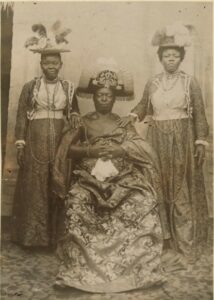
The nineteenth century presented new challenges which threatened the continuation of the empire and weakened the influence of Benin over its tributaries. It was a century that witnessed the rise of neighboring states, powerful enough to challenge the military might of Benin or compel subordinate states to submit to their authority. Economically, the abolition of the slave trade led to a decline in European commerce and the wealth of the Benin monarch. Furthermore, the gradual penetration of the British into the hinterland also weakened the Obas’ authority over his subject population. Eventually, the kingdom fell to the superior military might of the British during the reign of Oba Ovonramwen in 1897. As a result, Benin effectively became a colony of Britain, and subsequently, Oba Ovonramwen was deported to Calabar, a British possession on the coast of the Bight of Biafra.
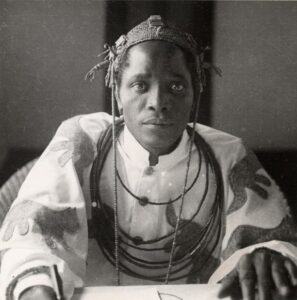
Between 1897 and 1913, Benin was administered by the British without an Oba (king). However, the desire of the British to legitimize their authority, minimize local revolt, and impose direct taxation led to the re-establishment of the monarchy. With the death of Ovonranmwen in January 1914, his son, Aiguobasimwin, was installed as Oba with the title Eweka II. His reign was premised on his loyalty to the British colonizers and support for their colonial policies. This meant that, unlike his predecessors, Oba Eweka II and his successor, Akenzua II, were mere legitimizing agents for the British administration. This weakened the authority of the monarchy as certain rival groups, such as the commercial and educated elites in Benin City, challenged the Oba for most of the colonial period. The British also stopped the Oba from receiving tribute from the vassal states. Thus, the influence of the Oba was limited to the Benin-speaking people. Furthermore, the British converted most of the people of Benin to Christianity, which diminished the spiritual authority of the Oba. Once converted, the Benin people began to associate the rituals and sacrifices of the Oba as fetish and disregarded their spiritual potency. In 1960 the power of the Oba of Benin was further eroded by Nigerian independence. Benin, already part of British Nigeria, now became a political region in the new nation. The Oba, along with dozens of former regional monarchs throughout Nigeria, now became a “traditional ruler” with no major political and spiritual authority over the people. Without taxing authority, he relied on Nigerian government subsidies to maintain his palace and court. Today, despite the weakened position of the Oba of Benin over his 1.7 million subjects, the monarchy remains a symbol of pride for the indigenous people of the region who still recall its glorious past.
The Obas of Benin, 1200-2024
Pre-Imperial Benin (1200-1440)
Eweka I (1200-1235)
Uwakhuahen (1235-1243)
Ehenmihen (1243-1255)
Ewedo (1255-1280)
Oguola (1280-1295)
Edoni (1295-1299)
Udagbedo (1299-1334)
Ohen (1334-1370)
Egbeka (1370-1400)
Orobiru (1400-1430)
Uwaifiokun (1430-1440)
Imperial Benin (1440-1897)
Ewuare the Great (1440-1473
Olua (1473-1480)
Ozolua (1483-1504)
Esigie (1504-1550)
Orhogbua (1550-1578)
Ehengbuda (1578-1606)
Ohuan (1606-1641)
Ohenzae (1641-1661)
Akenzae (1661-1669)
Akengboi (1669-1675)
Ahenkpaye (1675-1684)
Akengbedo (1684-1689)
Oroghene (1689-1700)
Ewuakpe (1700-1712)
Ozuere (1712-1713)
Akenzua I (1713-1735)
Eresoyen (1735-1750)
Akengbuda (1750-1804)
Obanosa (1804-1816)
Osemwende (1816-1848)
Adolo (1848-1888)
Ovonramwen N’Ogbaise (1888-1914)
Post-Imperial Benin (1914—present)
Eweka II (1914-1933)
Akenzua II (1933-1978)
Erediauwa (1979-2016)
Ewuare II (2016-present)

